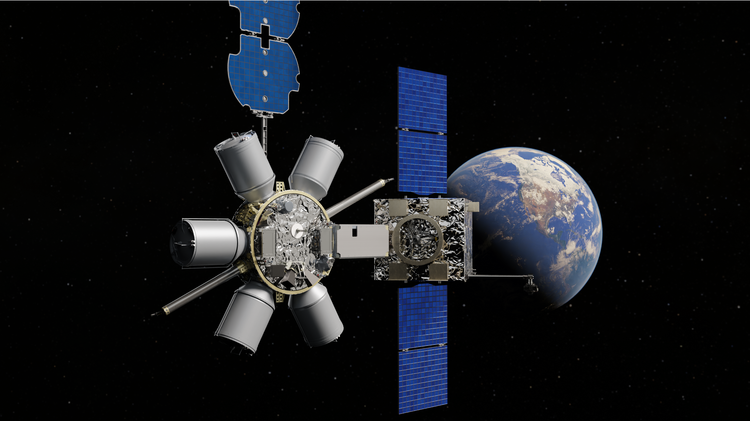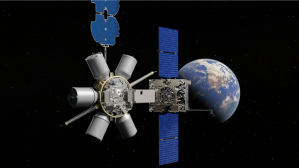Space Force eyes in-orbit satellite refueling, propulsion attachments for mobility gaps

The Space Force is focused on acquiring readily available on-orbit satellite refueling technology and a propulsion “backpacks” concept to meet emerging critical space mobility requirements from combatant commands, according to a service official.
“We’re taking our cues from what Space Systems Command is talking about, so that’s where prioritizing the on-orbit refueling is coming from as the immediate need,” Brig. Gen. Kristin Panzenhagen, program executive officer for assured access to space, told reporters Wednesday. “There are other things that we have looked at and kind of canvassed the industrial base, looking specifically at mobility to support the dynamic space operations and needs like that — such as the backpacks.”
The service has begun work to integrate new mobility technologies onto its military spacecraft. It created a new servicing, mobility and logistics program office in September to turn its broad discussions, requirements and research-and-development efforts into real capability, Col. Joyce Bulson, head of the new program office, said during the roundtable.
While the push is aligned with U.S. Space Command’s shift towards “dynamic space operations” — the ability to easily, continuously and quickly maneuver on-orbit satellites — the Space Force wants to lean on available tech already under development, Bulson added.
“It’s definitely a community of all of us coming together with these great activities and projects that have been started, but putting that together into a roadmap so that our efforts are aligned from what we’ve seen with our past engagements with our partners,” she said.
The current strategy is to ensure future satellites are equipped with refueling capabilities, Bulson said. Because satellites carry a finite amount of fuel, mission planners and operators are often forced to move them in a way that doesn’t waste fuel or shorten their lifespans — thus restricting their full range of capability.
Spacecom is looking to create a sustained space maneuver capability by 2028, and it plans to conduct a demonstration by 2026. In September, the Space Force awarded Astroscale a $25.5 million contract to deliver an on-orbit refueling prototype no later than 2026.
The service has also begun certifying industry designs for refueling ports that can be integrated onto its satellites — a crucial step to understanding what the refueling architecture will look like in the future. On Monday, Northrop Grumman’s Passive Refueling Module (PRM) was the first to be certified as the “preferred standard,” and Bulson’s office is continuing to review designs from other companies for possible certification, she said.
As for satellites already on orbit that are “unprepared” to be refueled, the Space Force is looking to connect attachments — something akin to a jetpack or backpack — that “could go connect up with an existing satellite to give it more propulsion, whether it’s not designed to have sufficient thrust or if it’s out of propellant,” Panzenhagen explained.
In the longer term, the Space Force wants to expand its overall servicing capabilities that will bolster the service’s satellites, Bulson noted.
“Refueling isn’t the only life limiter for a spacecraft, and not the only thing that can be targeted from a threat perspective,” she said, adding that the office is interested in “expanding into the larger kinds of services and capabilities from both a resilience and a life-extension perspective.”






